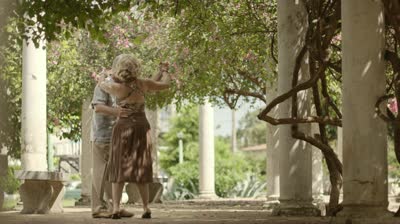“People with dementia will have the opportunity to be included in community life and meaningful activities as they wish. All services will give people with dementia the support they need, wherever they are living, to continue to be involved in their ordinary activities such as exercise, involvement in music, dance, social events and religious activity and to become involved in new activities and experiences”
This is a direct quote from the Standards of Care for Dementia in Scotland (2011) and reminds us all that people with dementia can be involved in everyday activities, both old and new.

The standard also states “services will give people with dementia the support they need”. In Scotland we invited my allied health professionals colleagues to share with us what they can do to support someone with dementia. In this blog I am sharing a “snapshot” of how 5 of the allied health professions describe their role when working with people with dementia and their carers, partners and families.
Who are we?
Allied health professionals are registered therapists who can help when people are worried about their memory, if a person has a diagnosis of dementia or if someone in the family has dementia. They offer information, advice and treatment tailored to individual needs. They are experts in rehabilitation, focusing on strengths and assisting people to stay connected to their community and remain in their home for as long as possible. In no more than 50 words this is what they say they can do for you if you have a diagnosis of dementia or are caring for someone with dementia:
- Dietitian – will help you to eat well
- Occupational therapist – will help you take part in social activities, hobbies and interests that are important to you.
- Physiotherapist – will help with physical activity
- Podiatrists – will help you look after your feet
- Speech and language therapists – will help you maintain everyday conversations
How can a dietitian help?
A dietitian can assess, diagnose and treat diet and nutrition problems at an individual level. Uniquely, they use the most up to date public health and scientific research on food, health and disease, which they translate into practical advice to help people make appropriate lifestyle and food choices.
How can an occupational therapists help?
The occupational therapist can help people to continue to do as much as they can in their daily lives, offering strategies to allow people to participate in social activities, hobbies and interests that are important to them. They understand the link between occupation and good health. They can advise people on small changes to the home environment to make life easier, recommending the right type of equipment to meet a person’s needs from memory equipment to kitchen equipment.
How can a physiotherapist help?
A physiotherapist can help if the person has difficulties with walking; experiencing falls or feel they are unable to access the activities they enjoy. They can provide the person with advice on, or offer an exercise programme to improve strength and balance, equipment to help walking and help with accessing community services.
How can a podiatrist help?
Healthy, pain free feet are important in maintaining mobility and enabling people to engage in a range of activities and be an active member of the community. NHS Podiatry services are available for people who have a foot problem or have a medical condition requiring podiatric intervention. (Personal foot care such as toenail cutting is not provided by NHS Podiatry services).
How can a speech and language therapist help?
Speech and language therapists are experts in communication and interaction and help people who have difficulty with everyday conversations. They are also experts in eating, drinking and swallowing difficulties. The speech and language therapist’s aim is always to enable a person to participate to their full potential in their chosen activities.
We are collating this information, with a description of how to access these professions into a leaflet that will be available in the Alzheimer Scotland resources centres, on our mini bus, available from our link workers and will be in our offices throughout Scotland. However we are really interested to know, when living with dementia or caring for someone with dementia “what matters to you and how can we help?”
 Elaine Hunter
Elaine Hunter
Allied Health Professional Consultant, Alzheimer Scotland
@elaineahpmh
My remit in Alzheimer Scotland is to bring the skills of AHPs to the forefront of dementia practice and to share with them the principles and practice of working in a major charity that is dedicated to “making sure nobody faces dementia alone”. I am leading the delivery of commitment 4 of Scotland’s Dementia Strategy. In short, a great job working with great people.











 Elaine Hunter
Elaine Hunter